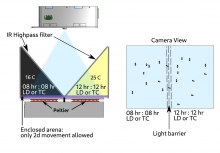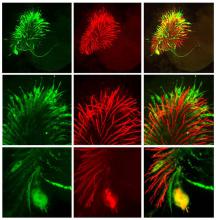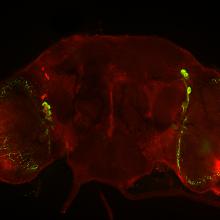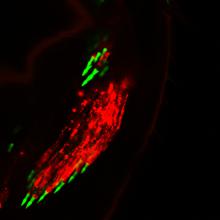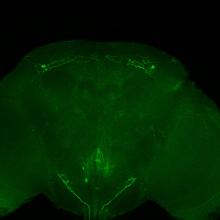Research
Temporal Niche choice
The majority of animals restrict their behavioural activity to defined times during the 24-hr day. This temporal niche is specified by an intricate interplay between the animal’s circadian clock and external factors like preferred temperature, light intensity, predators and food availability. Being active at the ‘wrong time’ can have severe impact on an organism’s fitness. But can animals actively choose their preferred temporal niche, and do individuals of the same species and population differ in their choice?
How can light/dark cycles reset circadian clocks?
Circadian clocks are self-sustained molecular oscillators and keep ticking in the absence of any environmental cues. But in order to be a useful tool for advantageous timing of biological processes in a natural day/night setting, these environmental changes must be able to influence (or reset) the molecular oscillations.
How does light synchronise the molecular clock works?
Most clock genes are expressed in a rhythmic fashion, meaning that like the biological processes they control, their expression reaches peak and trough values once during a 24-hr day (Stanewsky et al., 2003). In order to adjust these molecular oscillations to changing environmental conditions (for example the seasonal changes of day length), clock gene expression must somehow respond to changes in illumination.
Daily temperature fluctuations also synchronize circadian clocks
In nature, both the daily changes of light and dark and the concomitant changes in ambient temperature serve as signals to synchronize circadian clocks. In order to understand how these two pathways are integrated on a neuronal and molecular level we initiated studies using only temperature cycles as synchronizing factor (Glaser & Stanewsky, 2005).
Temperature compensation: the holy grail of circadian clocks?
Even though daily temperature fluctuations serve as a synchronizing signal for circadian clocks (see above), clocks are also temperature compensated. This means that when kept under constant conditions (i.e., no daily fluctuations of either light/dark or temperature), circadian clocks tick at the same speed at low or high constant temperatures.


